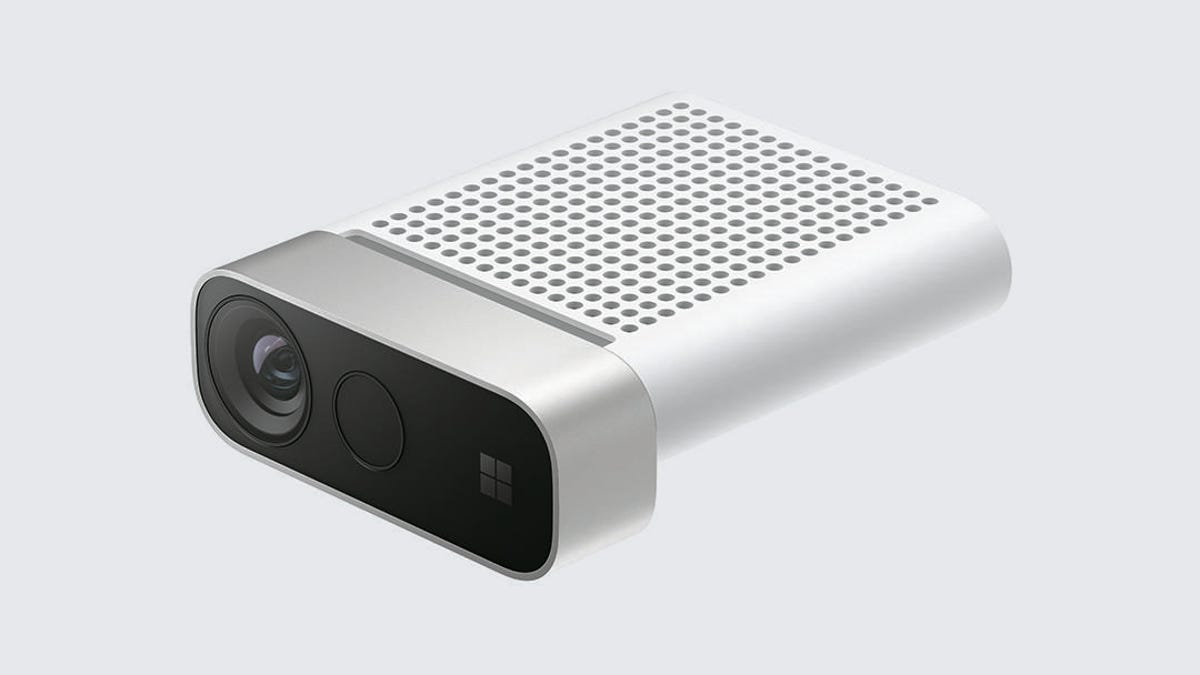Microsoft Kinect is back, as a $399 IoT device
The Azure Kinect has the sensors of the HoloLens 2, for a fraction of the price.

The Azure Kinect combines depth-sensing cameras with an array of microphones, connecting with Microsoft's cloud.
At Microsoft's HoloLens 2 unveiling here in Barcelona at MWC 2019, another product made a quiet debut. It's not a headset: It's the Kinect, reborn.
The Xbox Kinect, an experimental motion-controlled camera and microphone array for games, died in 2017 and was a precursor to the HoloLens headset.
But the Azure Kinect Developer Kit is back alongside the HoloLens 2 as a PC peripheral and developer kit, designed to also connect to the cloud and be used for computer vision-related tasks without a computer. The developer kit can be preordered now for $399 (about £300 or AU$560), a little over a tenth of the cost of the $3,500 HoloLens 2. To Microsoft, they're two parts of the same story.
The Azure Kinect was first announced last year at the company's Build conference. Onboard is "the same time-of-flight depth sensor developed for HoloLens 2," according to Microsoft, along with a seven-microphone array for speech recognition.
Healthcare company Ocuvera is apparently already using the Azure Kinect to sense for patient falls in hospitals. It's possible that the Azure Kinect could be used for any spatial-mapping needs or to add computer vision to workspaces, much like the Occipital Structure Core and a growing range of similar solutions.
Microsoft's Technical Fellow Alex Kipman, who led development on both the Kinect and HoloLens, shared some thoughts during a recent visit to Microsoft's campus in Redmond, Washington. "We didn't find as much signal in the living room for entertainment with devices like Kinect at the time," says Kipman of the original Xbox Kinect. "But you know, go look today at an Alexa ... what are those things doing? They're recognizing people, they're recognizing speech. They're doing a lot of the things that Kinect was doing in 2010.
"We're finding way more signal with Kinect in enterprise workloads," Kipman says of the Azure Kinect. "The workloads people are trying to run in enterprise, they tend to be cloud connected direct. They don't tend to go through a proxy PC. Which is why we then end-of-lifed Kinect for Windows and we now just launched Azure Kinect, which is still tetherable to a PC but also connects directly as an IoT appliance to our cloud."

